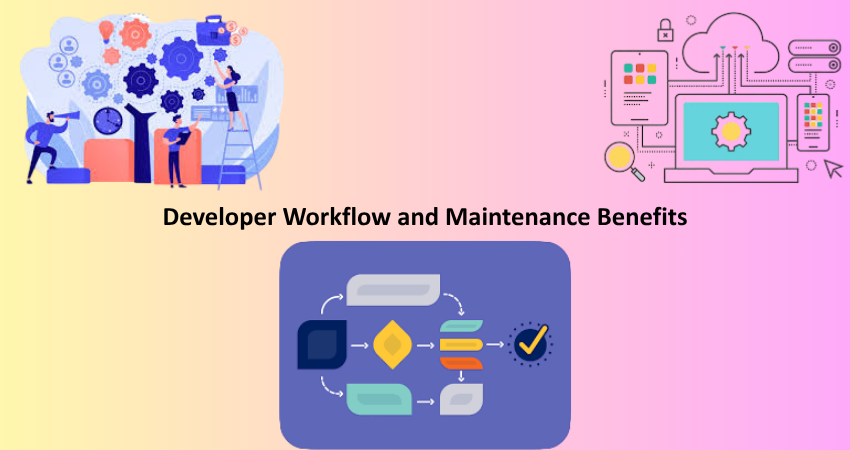
Introduction
It is true that WordPress development has had so many changes over a decade, but hardly anything, apart from this introduction of Gutenberg, could have changed this entire world. The Gutenberg editor, which was launched with WordPress 5.0, made the old stylus editor obsolete by inventing a new block-centered editor. Users can now create rich, flexible layouts without writing any code. This shift is not merely an upgrade in one’s editing capability, but also the new standard in terms of how contents are created and managed within WordPress. While Gutenberg is becoming increasingly prominent, a significant number of theme developers would rather stay away from it. Some act out of habit, while others fear the learning curve that would come with fitting their themes into it. Today, making your theme Gutenberg compatible is no longer optional; it is a strategic necessity for staying relevant and competitive in the modern WordPress ecosystem.
This article will devote itself to the convincing arguments for why theme developers should put Gutenberg compatibility front and center. The article will then discuss the user advantages, the developer advantages, and finally the broader implications for business and SEO. The journey shall examine rookie US blunders and the manner of how design blocking preferences in a theme may continue to support the works in times to come. Whether you design themes for clients, sell on marketplaces, or create themes for your projects, working with Gutenberg will help to deliver better experiences that set you apart as a forward-thinking WordPress professional.
Enhanced User Experience for Site Owners
Empowering Non-Technical Users
The best advantage through having a Gutenberg-compatible theme is that nontechnical users would be able to assume control over their own websites without calling developers for every little change. Site owners can organically insert, move and adjust different elements, be it text, images, buttons, columns, or even sophisticated layouts, all using the Gutenberg block editor. When these capabilities are built directly into your theme, it ensures that users can work with Gutenberg features out of the box, free from styling issues, awkward workarounds, and roadblocks that aggravate their intentions for page design. That matters; today’s WordPress users have come to expect that flexibility. They want to be able to make little changes on the go and build or change landing pages, testimonials, home page layout, and many more.
Gutenberg compatibility problems usually require that users do some manual CSS manipulation or plugin installation to achieve the most basic of layout goals. That’s not what the promise of Gutenberg was all about. With your theme knowing that fully, you are not just meeting technical criteria; instead, you are providing users with an experience that empowers trust. They appreciate that the theme actually works as intended with WordPress, permitting them to go on their merry way, growing their business or sharing their content, instead of troubleshooting layout glitches. The result of all this is happy customers, fewer support requests, positive reviews in a competitive market, and more traction for your theme.
Consistency Across Editing and Frontend
Another huge advantage of being compatible with Gutenberg is also leveling out the backend editor and its output from the frontend. The disapparent cut of how content always looked in the editor and how it rendered on the live site was enormously irritating to Word press users before Gutenberg era. Developing a visual editing concept that indicates outside design match would surely close this gap. Since the theme in active use was not built or updated to support the styles and block structures of Gutenberg, it does not apply. In short, if your theme is compatible with Gutenberg, you have made sure that your users experience a truly WYSIWYG (What You See Is What You Get) experience. This drastically reduces confusion, speeds up content creation, and builds confidence in users regarding their action on the running site.
The absence of proper Gutenberg support creates the potential for users to create pages that look perfect in the editor but are completely flawed in the front end due to block styles not being available or layout inconsistencies. This creates frustration and tarnishes your credibility as a theme developer. Making your theme Gutenberg compatible means writing CSS in accordance with core block styles as well as for block support for the most common blocks such as Cover, Gallery, and Columns. Custom block styles are optional, which would enhance design flexibility. Thus, creating a seamless professional experience where what the user builds in the editor is indeed reflected live-to-the-site is an absolute requirement in today’s modern WordPress ecosystem.
Future-Proofing Your Theme

Aligning with WordPress Core Roadmap
The WordPress core development team has made it pretty clear that Gutenberg is not just a “flavor of the month”-type thing; it is actually the future and it whole heartedly embraces the future in all continued improvements and coming features, from full site editing (fse) and block-based widgets all the way to advanced patterns and even global styles. As the wp universe continues to evolve, it becomes more and more essential that your theme be compatible with this new level of ability-gutenberg. Themes that don’t offer block editor compatibility run the risk of becoming obsolete as more and more functionalities from core wordpress move into blocks, making customization impossible for the theme using a block editor to get its work done. By making this adaptation now, you are gearing your theme for future success, minimizing the amount of rewrites extremely new features will require, and keeping the theme relevant over time. You won’t find yourself catching up; you will be building on a foundation meant to grow with WordPress itself.
Additionally, aligning your theme with the WordPress roadmap will impress users and clients, as they know you are committed to following best practices and creating a modern product. Developers that shun Gutenberg or lag in compatibility updates will find that their themes will increasingly break with core updates or lose market appeal where Gutenberg-ready designs are becoming the norm. Adopting Gutenberg early shows technical leadership and ensures your themes derive continuing value in an ever-scoping arena. This promotes your immediate users’ interest and extends to your professional credibility within the WordPress community.
Reducing Dependence on Third-Party Builders
It is yet another plus for future proofing your theme to render it Gutenberg compatible because you are minimizing reliance on many third-party page builders. Many of those themes that do not support a block editor tend to require additional plugins like Elementor, WPBakery, or Beaver Builder to achieve a modern configuration. While such tools indeed do provide power in customizing your work, with their existence come dependency issues, performance overhead, and still another layer of concepts for the user interface. You provide instant gratification: sites with beautifully built themes operating seamlessly with Gutenberg so that the users do not have to install yet another app just to design their pages. This way of doing things becomes more appealing, especially to small business owners, bloggers, and freelancers looking for a no-how solution that simply works.
Third-party builders can also attract risks like compatibility issues, licensing fees, and limitations introduced by external plugins when depended upon heavily. Focusing more on Gutenberg compatibility reduces the aforementioned risks and assures the users that their site is built on the native WordPress stack. And as a developer, it frees you from having to endless test and tweak your theme for multiple third-party tools. That is time well-spent in improving your theme design, performance, and feature set, resulting in a cleaner, faster, and more maintainable offering.
Business and SEO Advantages
Competitive Edge in Theme Marketplaces
In an overcrowded field of premium and free theme marketplace, more than design is needed to stand apart-good modern qualifications with real value for the end-users. That’s where Gutenberg compatibility comes into play. These days, the buyers are much more intelligent than before, and a great majority are evidently looking for themes that assure block editor compatibility. That is evident while browsing ThemeForest, TemplateMonster, and even the official WordPress theme directory, where Gutenberg-ready themes receive the most attention and filtering in searches. Thus, by making your theme compatible, you also indirectly advertise it among a wider audience that needs assurance that the theme they will be taking will surely work with the latest features of WordPress.
Furthermore, supporting the Gutenberg compatibility can lower refunds and amplify positive reviews. Users are much more likely to leave good feedback when a theme “just works” with their chosen editor, and they don’t have to fight over layouts or styles. Being incompatible with Gutenberg frustrates users, increases bad reviews, and ultimately kills sales. If you take theme development seriously at this sustainable business level, embracing Gutenberg compatibility is not only a technical choice but one of the best business decisions for keeping up with competitors and garnering brand loyalty.
SEO and Performance Benefits
The reason for making the theme Gutenberg-friendly is to gain a series of benefits, both seizing on the performance and with SEO advantages. The block editor issues clean semantic HTML markup, enabling search engines with better means to index and comprehend your content. A theme that supports Gutenberg correctly keeps the output code thin and tidy and does not add unnecessary wrappers or bloat that could otherwise be introduced via compatibility hacks or third-party builders. This obviously translates into faster loading times and better accessibility and SEO-friendly attributes as well. With Core Web Vitals and page speed being some of the major ranking factors, every optimization you can do counts as a blessing, and Gutenberg compatibility gives your themes that little edge ahead.”
Gutenberg indeed offers the end-user ways to create pages with good heading hierarchy, image alt text and responsive design, which is what an SEO-best practice entails. Your themes go one step further by providing well-styled blocks and well created responsive block patterns so that content can be created that not only looks good but also performs well in search engines. This could mean increased traffic and engagement to the user’s website and thereby boosting the perceived value of your theme. In a nutshell, compatibility with Gutenberg supports virtuous cycles where good design meets good SEO-promise this combination is great for developers as well as end users.
Developer Workflow and Maintenance Benefits

Easier Theme Maintenance and Updates
Compliance with Gutenberg is always really rare amongst the many themes that exist today. This, of course, means that themes will be so much easier to maintain during their lifetimes. With the WordPress block editor as opposed to custom frameworks or older approaches, the use directly benefits from all the endless changes made by the core platform. Hence, instead of having to reinvent the wheel on every update or compatibility patch, you focus on beautifying your theme, fine-tuning performance, and adding features that truly enhance a user’s experience. With a Gutenberg-oriented workflow, you are ensuring that your theme will remain stable, current, and easier to support against future versions of WordPress.
Constantly there are many themes which do not embrace Gutenberg and always end up working on some complex hacks or create some workarounds so that they can still be used with the later versions of WordPress. Maintenance could become a nightmare for an adoptive site, especially if you have to maintain multiple sites for different clients and/or products with that architecture. By adding Gutenberg support, you reduce technical debt and simplify your codebase to a size that is easier to manage over the long term. Clean updates, easier support, and happier users-all because you built your foundation before WordPress actively improved it with every new release.
Easier Collaboration With Other Developers
Gutenberg is an integral part of simplifying the maintenance of the theme and allows better collaboration on projects with clients, team members, or open-source contributions. As it becomes the de facto standard for modern WordPress development, increasing numbers of developers are getting themselves familiar with its structure, its practices, and its capabilities. When you design your theme for Gutenberg, you are more or less speaking a common language that other professionals can easily understand and work upon. This translates into short onboarding processes, trivial misunderstandings, and a collective work that functions seamlessly and productively.
On the contrary, there are such themes which are based on any kind of personal awful or outmoded or very complicated structures that usually become undue barriers for neophyte developers who invest months in learning cumbersome proprietary structures or figuring strictly undocumented peculiarities before he/she gets to the meat of the matter. For the opposite, these standard commonalities bestow enormous readability, modifiability, and extensibility to Gutenberg-compatible themes due to their respective knowledge and support from the larger Word Press community. This, indeed, makes things easier for you as a developer; as a result, you could attract a collaborator, could work on much larger projects, and could grow your name as a pro that builds clarity, quality, and openness in mind.
Conclusion
Gutenberg compatibility is now an indispensable addition to a theme instead of an optional extra, as it is mandatory for creating modern, user-friendly, and future-proof WordPress products. Beyond pure technical compliance, it also provides significant benefits, such as enhancing the editing quality of site owners or simply revisiting the core roadmap of WordPress. It opens the door for much more flexibility, consistency, and empowerment for your users and prepares your themes to survive in the rapidly evolving ecosystem. The business benefits are numerous and include better performance than the competitor in marketplaces, better SEO, reduced maintenance costs, and independence from some third-party resources, not to mention the case that adds to the benefits of fully adopting Gutenberg.
Gutenberg-incompatible themes are bound to languish in obsolescence in the face of WordPress adoption of full-site editing and plugin-style block integration. Future web design with WordPress will be used against any themes not made block-friendly just now, along with expectations from users currently. Be they client projects, premium theme sales, or even private ones, projects with Gutenberg are sure to create a smarter, faster, and more engaging digital experience for all users involved, and probably best for the intended beneficiaries.